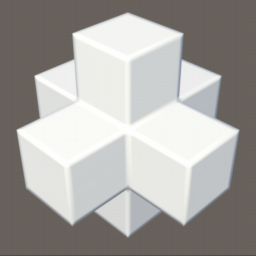
Coherency gathering in ray tracing: the benefits of hardware ray tracking
- the article presents the problems with ray tracing in terms of divergence workflows
- Imagination GPUs are able to reorder rays in hardware to maintain better coherency

Generating Perfect Normal Maps for Unity (and Other Programs)
- the article shows what needs to be considered when baking normal maps for use with separate applications
- it shows what kind of different conventions exists, what common artifacts look like and how to verify…

Separate your filters! Separability, SVD and low-rank approximation of 2D image processing filters
- the article presents the basics of Singular Value Decomposition
- shows how to use the concept to check if filters are separable and if not how it helps with approximation…

Learning from data
- the article presents how ordering mesh data can influence rendering performance
- compares different algorithms developed for this purpose
- the primary focus is on how to train these algorithms using machine learning techniques
- analyzes the results of …

Clustered shading evolution in Granite
- the article shows an overview of deferred shading techniques
- alternative structures and methods for optimizations are presented
- using compute shader for conservative rasterization for spot and sphere lights

Physically based shading references, at the end of 2019
- collection of resources covering physically based shading
- a short summary for every source is provided

Sampling Burley's Normalized Diffusion Profiles
- the article presents how to inverse the CDF of the Disney SSS

PowerVR PerfDoc – Performance Validation for PowerVR
- fork of the PerfDoc performance layer to detect performance issues on PowerVR hardware
- the article provides an overview of performance issues that the layer can detect and possible improvements

PC Rendering Techniques to Avoid when Developing for Mobile VR
- the article presents an overview of techniques that are not a good fit for mobile VR applications
- provides brief explanations of the methods and the reasons for why they should be avoided

DeepFovea: Neural Reconstruction for Foveated Rendering and Video Compression using Learned Statistics of Natural Videos
- the paper presents a new technique that uses a neural network to reconstruct foveated rendering from sparse source data
Advertisement
Popular Blogs
Advertisement




